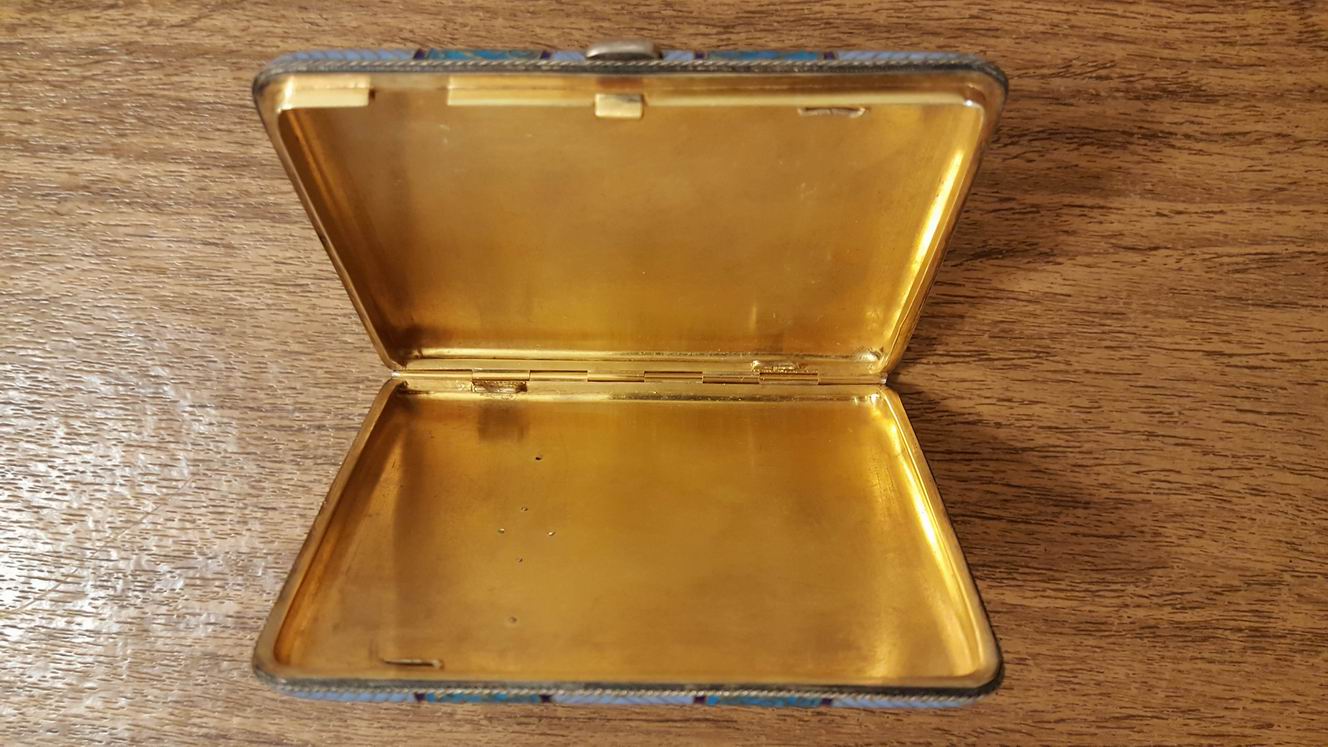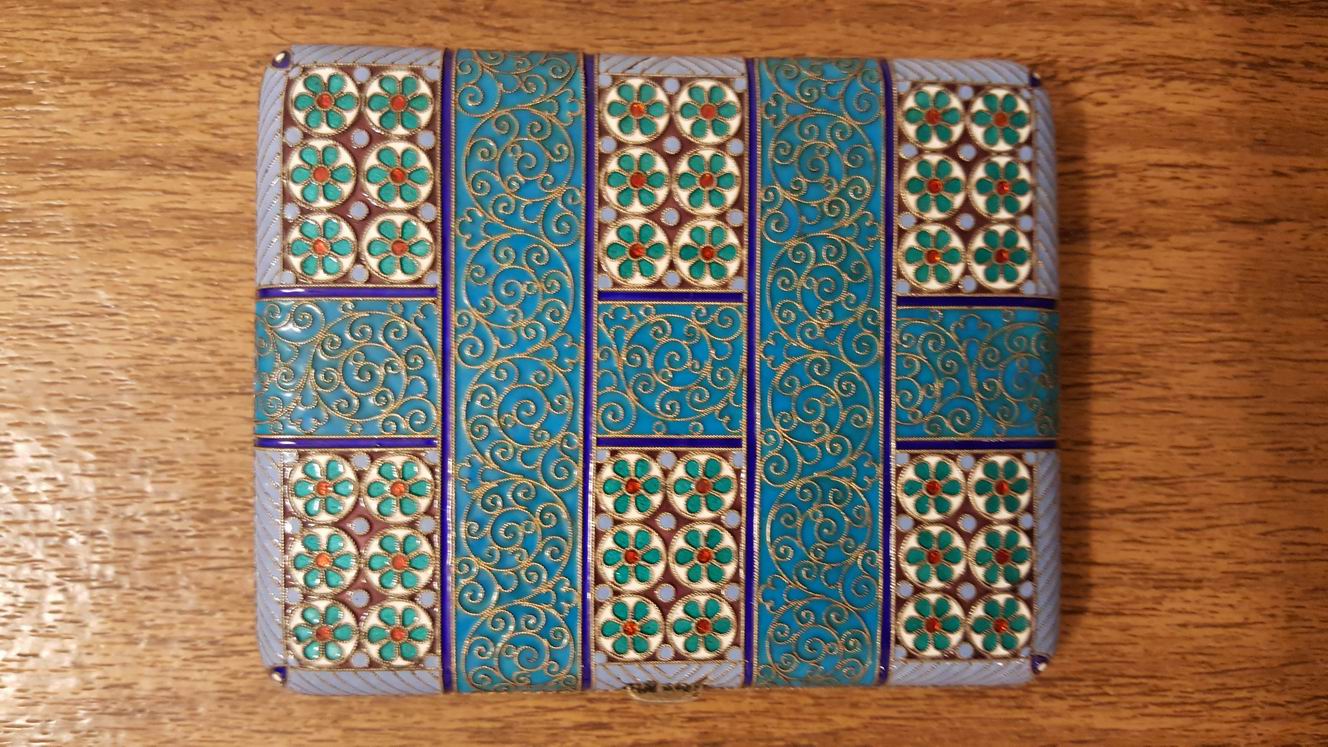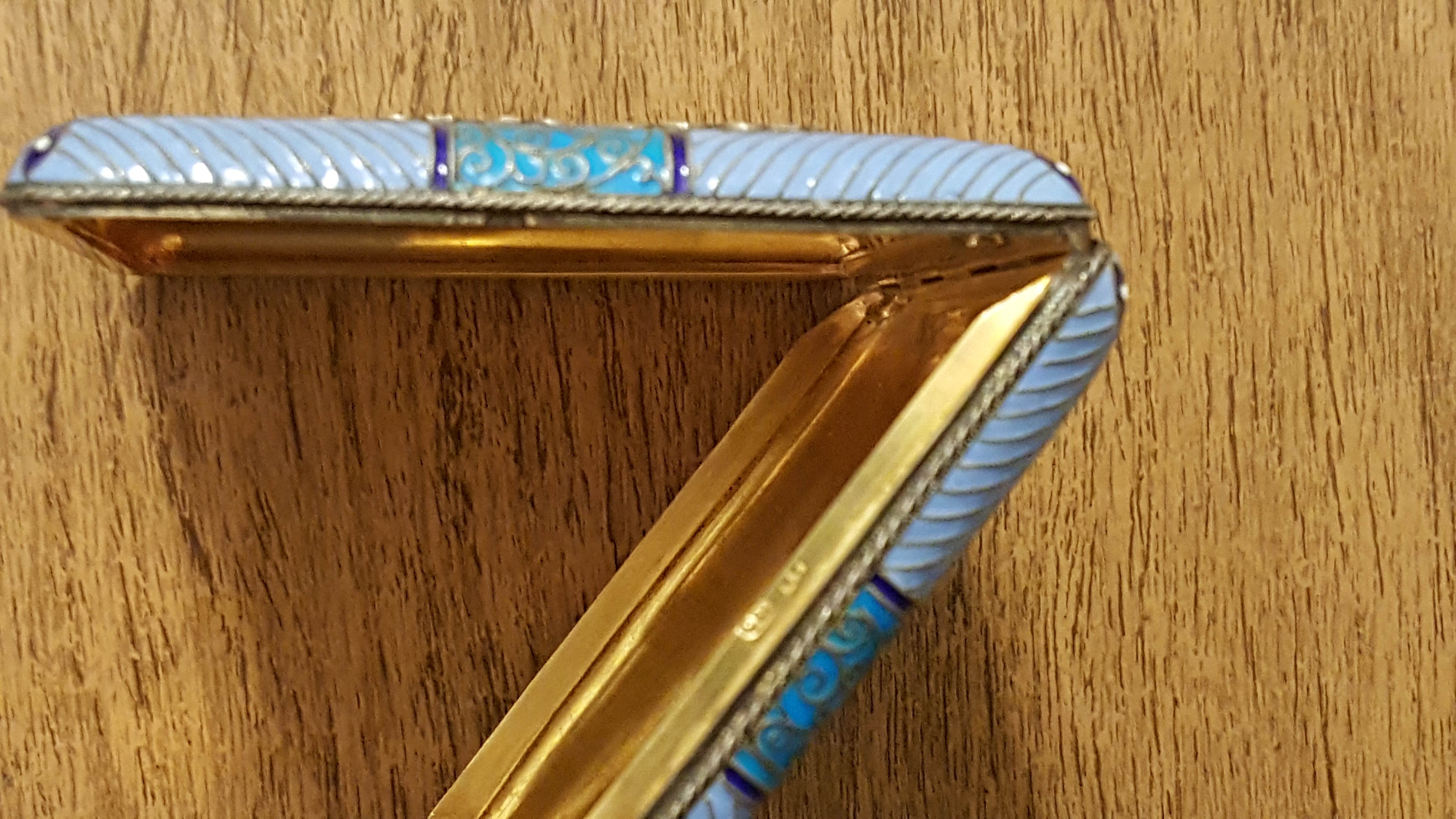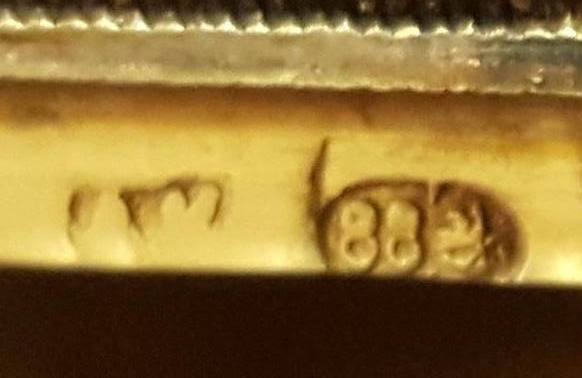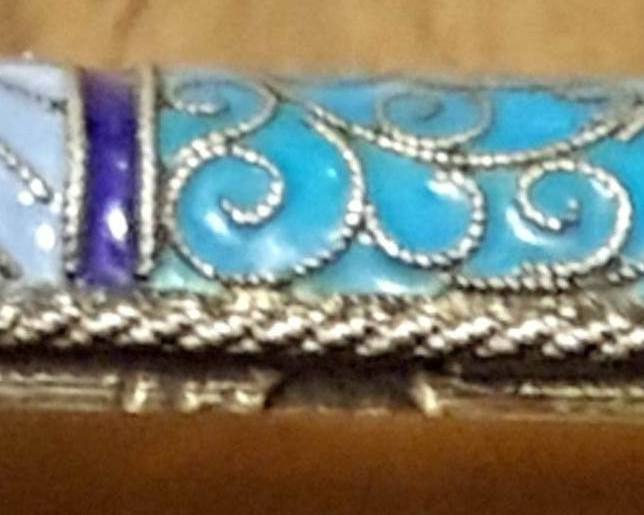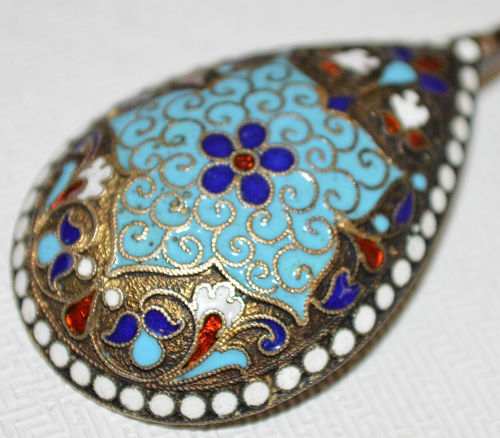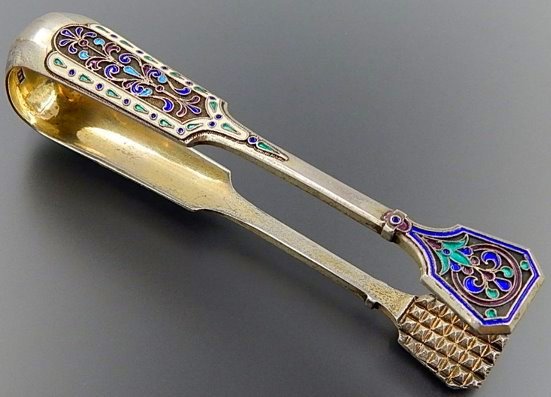AG2012 wrote:Hi,
As suggested above show us sharp marks and the inside of the case.
Marks are supposed to be on both halves and struck before enameling for obvious reason.
How`s the application (years) fixed ? Is it riveted ?
Discrepancies: suspicious marks on the `lip`` ,rather average quality and ``88`` standard.
On the other hand, is the provenance reliable ?
Eager to see how the issue develops.
Thank you for additional info.
Regards
Thank you, everyone who has responded, for your valuable time and expertise, which are most appreciated.
In response to the question about provenance, this case was carried out of Russia in 1916 by my maternal grandparents and has been in the family ever since.
At this time, I am preparing to pass this and some other family keepsakes along to my niece and nephew. I thought it might be interesting to them and future generations if the collection included some notes about the individual pieces, beyond simply who owned them and how they were used.
If fakes of such an item were being made around 1900, then I suppose it is entirely possible that this is such a fake.
The marks appear on opposing sides of the tops of the two “lips.” I am providing links to a photo to try to illustrate this. I am also providing links to a photo of the interior and back of the case, as requested.
In response to the question about the commemorative date on the front of the case, I believe the interior view image shows the six rivets (if that’s the correct term) that are holding that piece into place. The “nib” (protruding piece) of the rivet closest to the bottom edge is missing, though the hole for it is there.
In response to the question about the photos of the marks, I did the best I could with my existing camera and do apologize for any inconvenience. The reality is that the marks are rather indistinct, not at all like the samples posted in this thread. So perhaps the piece indeed is not genuine.
Thank you again for your time.
